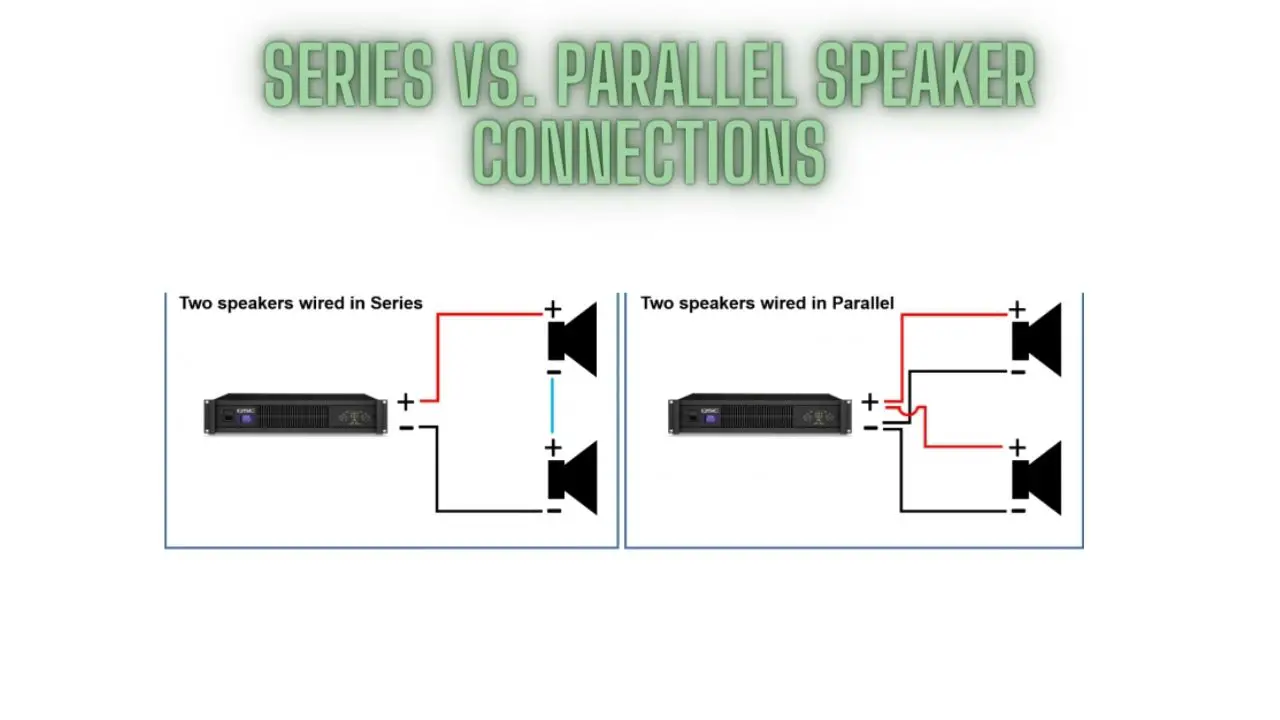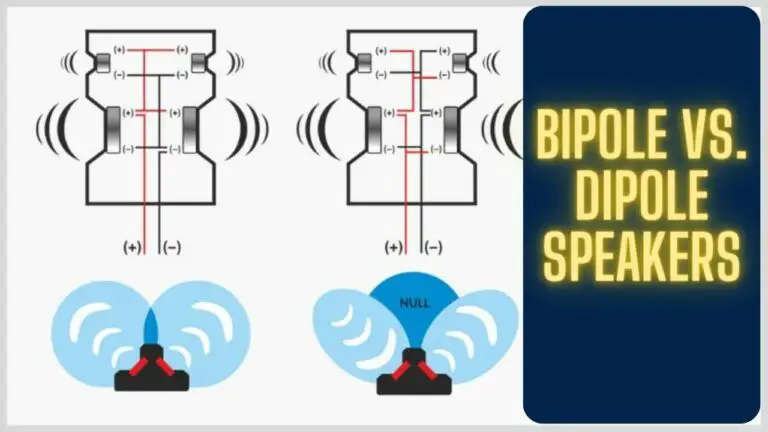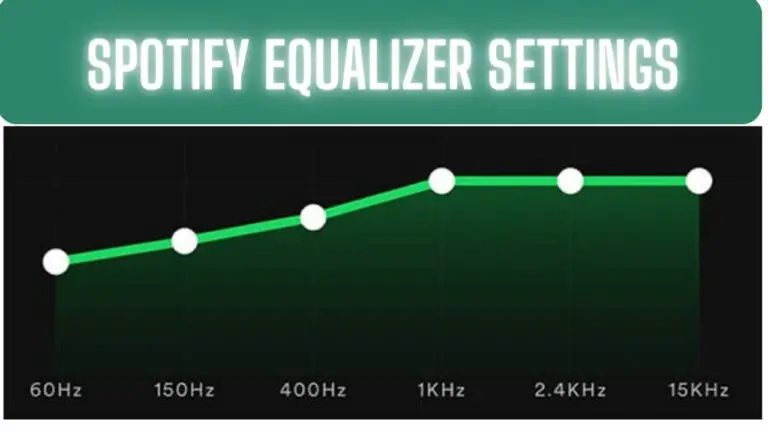Series vs Parallel Speaker Connections: Choosing the Right Setup
Introduction
When setting up a sound system, understanding speaker connections is crucial for achieving optimal performance and ensuring compatibility with amplifiers and other audio equipment. Two common methods for connecting speakers are series and parallel configurations, each with its advantages and disadvantages.
In this guide, we will delve into the differences between series and parallel speaker connections, exploring their unique characteristics, applications, and considerations. By understanding the nuances of each connection method, you can make informed decisions when configuring your sound system and maximize the quality of your audio output.
Understanding Speaker Connections
Speaker connections refer to the wiring configurations used to connect multiple speakers to audio equipment such as amplifiers, receivers, or sound systems. The way speakers are wired can have a significant impact on impedance, power handling, and overall performance. Two primary methods for connecting speakers are series and parallel configurations.
- Series Speaker Connections:
- In a series connection, the positive terminal of one speaker is connected to the negative terminal of the next speaker, and so on. The remaining positive and negative terminals are then connected to the amplifier or audio source.
- In a series configuration, the total impedance of the speakers is additive. For example, if two 8-ohm speakers are connected in series, the total impedance would be 8 ohms + 8 ohms = 16 ohms.
- Series connections are less common in speaker setups due to their higher impedance and reduced power transfer compared to parallel connections.
- Series connections are typically used when the amplifier requires a higher impedance load or when specific impedance matching is necessary.
- Parallel Speaker Connections:
- In a parallel connection, all the positive terminals of the speakers are connected together, and all the negative terminals are connected together. The combined positive and negative terminals are then connected to the amplifier or audio source.
- In a parallel configuration, the total impedance of the speakers is calculated differently from series connections. The formula for calculating total impedance in parallel is more complex but generally results in a lower impedance compared to series connections.
- Parallel connections are more common in speaker setups due to their lower impedance and increased power transfer capabilities.
- Parallel connections are suitable for most home audio systems and setups where multiple speakers need to be connected to a single amplifier or receiver.
Understanding the differences between series and parallel speaker connections is essential for selecting the appropriate wiring configuration for your specific audio setup. Factors such as amplifier impedance requirements, power handling capabilities, and desired audio performance will influence your choice of speaker connection method. By carefully considering these factors, you can ensure optimal compatibility and performance in your sound system.
Advantages and Disadvantages
Series Speaker Connections:
Advantages:
- Increased Total Impedance: Series connections result in a higher total impedance compared to parallel connections. This can be advantageous when the amplifier requires a higher impedance load to operate efficiently.
- Simplified Wiring: Series connections involve daisy-chaining speakers together in a linear fashion, which can simplify wiring in certain setups.
- Improved Current Sharing: In series connections, the same current flows through each speaker, ensuring equal distribution of power among them.
Disadvantages:
- Reduced Power Transfer: Series connections result in reduced power transfer compared to parallel connections. This can lead to lower volume levels and decreased audio performance.
- Higher Overall Impedance: The higher total impedance in series connections may not be suitable for all amplifiers, particularly those designed for lower impedance loads.
- Limited Applications: Series connections are less common in speaker setups due to their limitations in power handling and overall performance.
Parallel Speaker Connections:
Advantages:
- Lower Total Impedance: Parallel connections result in a lower total impedance compared to series connections. This allows for increased power transfer and higher volume levels.
- Enhanced Power Handling: Parallel connections enable speakers to share the load, resulting in improved power handling capabilities and overall audio performance.
- Versatility: Parallel connections are more versatile and suitable for a wide range of speaker setups, including multi-channel home theaters and stereo systems.
Disadvantages:
- Complex Wiring: Parallel connections involve connecting multiple speakers in parallel, which can be more complex and time-consuming compared to series connections.
- Potential Phase Issues: When multiple speakers are connected in parallel, there is a risk of phase cancellation or phase issues, which can affect sound quality.
- Amplifier Compatibility: Some amplifiers may not be designed to handle lower impedance loads associated with parallel connections, leading to potential compatibility issues.
Overall, both series and parallel speaker connections have their advantages and disadvantages, and the choice between them depends on factors such as amplifier impedance requirements, power handling capabilities, and desired audio performance. By carefully considering these factors, you can select the appropriate wiring configuration to optimize the performance of your sound system.
Impedance Considerations
Impedance is a crucial factor to consider when connecting speakers to audio equipment such as amplifiers or receivers. It is measured in ohms (Ω) and represents the resistance to the flow of electrical current in a circuit. Understanding impedance considerations is essential for ensuring compatibility and optimal performance in your sound system.
Here are some key considerations regarding impedance in speaker connections:
- Matching Amplifier Impedance:
- It is important to match the impedance of your speakers to the impedance rating of your amplifier or receiver. Most amplifiers are designed to work with specific impedance loads, typically ranging from 4 ohms to 8 ohms.
- Connecting speakers with a lower impedance than the amplifier’s rating can overload the amplifier and potentially damage it. Conversely, connecting speakers with a higher impedance may result in reduced power output and performance.
- Total Impedance in Series Connections:
- In series speaker connections, the total impedance is additive. For example, if you connect two 8-ohm speakers in series, the total impedance would be 8 ohms + 8 ohms = 16 ohms.
- Series connections result in a higher total impedance compared to parallel connections. This can be advantageous when the amplifier requires a higher impedance load to operate efficiently.
- Total Impedance in Parallel Connections:
- In parallel speaker connections, the total impedance is calculated differently due to the parallel wiring configuration. The formula for calculating total impedance in parallel is more complex but generally results in a lower impedance compared to series connections.
- Parallel connections result in a lower total impedance compared to series connections. This allows for increased power transfer and higher volume levels.
- Amplifier Compatibility:
- Ensure that your amplifier or receiver is compatible with the total impedance of the speakers connected to it. Check the amplifier’s specifications to determine its impedance rating and ensure that it can safely handle the impedance load of your speakers.
- Some amplifiers may be designed to work with a specific range of impedance loads, while others may be more flexible in their compatibility.
- Speaker Wiring Configurations:
- Choose the appropriate speaker wiring configuration (series or parallel) based on your impedance requirements and amplifier compatibility. Consider factors such as power handling capabilities, desired volume levels, and overall performance when selecting the wiring configuration for your sound system.
By carefully considering impedance considerations and selecting the appropriate speaker wiring configuration, you can ensure compatibility and optimal performance in your sound system. Be sure to consult the specifications of your amplifier and speakers to make informed decisions regarding impedance matching and speaker connections.
Power Handling
Power handling is another critical consideration when connecting speakers to audio equipment. It refers to the maximum amount of electrical power that a speaker can handle without being damaged or experiencing distortion. Understanding power handling capabilities is essential for ensuring the longevity and performance of your speakers.
Here are some key points to consider regarding power handling in speaker connections:
- Speaker Power Rating:
- Speakers typically have a power rating specified in watts (W), which indicates the maximum amount of power they can handle. This rating may consist of both continuous (RMS) power handling and peak power handling.
- The continuous power handling rating represents the amount of power a speaker can handle continuously without being damaged. Peak power handling refers to the maximum power the speaker can handle for short bursts without damage.
- Matching Amplifier Power:
- It is important to match the power handling capabilities of your speakers to the output power of your amplifier or receiver. Connecting speakers with a lower power handling capability to a high-powered amplifier can result in overpowering and potentially damaging the speakers.
- Conversely, connecting speakers with a higher power handling capability to a low-powered amplifier may result in underpowering, which can lead to distortion and poor audio quality.
- Power Distribution in Parallel Connections:
- In parallel speaker connections, power is distributed among the connected speakers based on their impedance and power handling capabilities. Speakers with higher power handling capabilities can handle more power than speakers with lower power handling capabilities.
- When connecting speakers in parallel, ensure that the total power handling capability of all speakers combined does not exceed the output power of the amplifier.
- Impedance Considerations:
- Impedance and power handling are closely related, as speakers with lower impedance ratings typically have higher power handling capabilities. When connecting speakers in series or parallel configurations, consider both impedance and power handling to ensure compatibility with the amplifier.
- Dynamic Range and Headroom:
- Adequate power handling capabilities allow speakers to reproduce dynamic range and transient peaks in audio signals without distortion or damage. Speakers with higher power handling capabilities typically have more headroom to handle dynamic peaks in music and audio content.
- Speaker Protection:
- In addition to matching power handling capabilities, consider using additional speaker protection measures such as fuses, circuit breakers, or limiting devices to prevent damage in case of power overload or amplifier malfunction.
By carefully considering power handling capabilities and matching speakers to the output power of your amplifier, you can ensure optimal performance and protection for your speakers in your audio system. Be sure to consult the specifications of your speakers and amplifier to make informed decisions regarding power matching and speaker connections.
Wiring Configurations
When connecting speakers to audio equipment, choosing the appropriate wiring configuration is crucial for achieving optimal performance and ensuring compatibility with amplifiers or receivers. Two common wiring configurations for connecting multiple speakers are series and parallel connections. Let’s explore each wiring configuration in more detail:
- Series Wiring Configuration:
- In a series wiring configuration, the positive terminal of one speaker is connected to the negative terminal of the next speaker, and so on, forming a continuous chain. The remaining positive and negative terminals are then connected to the amplifier or receiver.
- Series wiring results in a higher total impedance compared to parallel wiring. The total impedance of speakers connected in series is additive, meaning that the impedance of each speaker is added together to calculate the total impedance.
- Series wiring is less common in speaker setups due to its higher impedance and reduced power transfer compared to parallel wiring. However, it may be used when the amplifier requires a higher impedance load or for specific impedance matching requirements.
- Parallel Wiring Configuration:
- In a parallel wiring configuration, all the positive terminals of the speakers are connected together, and all the negative terminals are connected together. The combined positive and negative terminals are then connected to the amplifier or receiver.
- Parallel wiring results in a lower total impedance compared to series wiring. The total impedance of speakers connected in parallel is calculated differently from series connections and generally results in a lower impedance.
- Parallel wiring is more common in speaker setups due to its lower impedance and increased power transfer capabilities. It allows multiple speakers to share the load, resulting in improved power handling and overall audio performance.
When choosing a wiring configuration for your speaker setup, consider factors such as amplifier impedance requirements, power handling capabilities, and desired audio performance. By selecting the appropriate wiring configuration and ensuring compatibility with your audio equipment, you can optimize the performance of your sound system and enjoy high-quality audio playback. Be sure to consult the specifications of your speakers and amplifier to make informed decisions regarding wiring configurations and speaker connections.
Compatibility with Amplifiers
Compatibility with amplifiers is a crucial consideration when selecting speaker wiring configurations, as it ensures optimal performance and prevents potential damage to audio equipment. Here’s how compatibility with amplifiers factors into series and parallel speaker connections:
- Series Speaker Connections:
- Series connections result in a higher total impedance compared to parallel connections. Amplifiers are designed to work with specific impedance loads, typically ranging from 4 ohms to 8 ohms.
- Series connections may be suitable for amplifiers that require a higher impedance load to operate efficiently. However, they may not be ideal for all amplifiers, especially those designed for lower impedance loads.
- Before using series speaker connections, ensure that your amplifier is compatible with the higher impedance load resulting from series wiring. Check the amplifier’s specifications to determine its impedance rating and ensure it can safely handle the impedance load of your speakers.
- Parallel Speaker Connections:
- Parallel connections result in a lower total impedance compared to series connections. This allows for increased power transfer and higher volume levels, making parallel connections more suitable for many amplifiers.
- Most amplifiers are designed to work with a range of impedance loads, including those resulting from parallel speaker connections. Parallel wiring configurations are more versatile and compatible with a wide range of amplifiers.
- When using parallel speaker connections, ensure that the total impedance of your speakers matches or falls within the acceptable range specified by your amplifier. Exceeding the amplifier’s impedance limits can lead to overheating, distortion, and potential damage to the amplifier.
- Impedance Matching:
- Regardless of the wiring configuration used, it is essential to match the impedance of your speakers to the impedance rating of your amplifier for optimal performance. Mismatched impedance can result in reduced power output, distortion, and potential damage to audio equipment.
- Consult the specifications of your speakers and amplifier to ensure compatibility and proper impedance matching. Choose speaker wiring configurations that provide the appropriate impedance load for your amplifier’s specifications.
By considering compatibility with amplifiers and ensuring proper impedance matching, you can select the appropriate speaker wiring configuration and optimize the performance of your sound system. Be sure to consult the specifications of your speakers and amplifier and follow manufacturer guidelines for safe and effective speaker connections.
Common Applications
Common applications for series and parallel speaker connections vary based on the specific requirements of audio setups and the desired performance outcomes. Here are some typical scenarios where each wiring configuration is commonly used:
- Series Speaker Connections:
- High-impedance Systems: Series connections are suitable for setups requiring higher impedance loads, such as vintage amplifiers or audio equipment designed for higher impedance speakers.
- Specific Impedance Matching: In some cases, series connections may be used to achieve precise impedance matching between speakers and amplifiers, particularly in professional audio applications.
- Long Speaker Runs: Series connections may be used for long speaker cable runs where impedance drop over distance is a concern, as series wiring can increase total impedance and minimize signal loss.
- Parallel Speaker Connections:
- Home Theater Systems: Parallel connections are commonly used in home theater setups where multiple speakers need to be connected to a single amplifier or receiver. Parallel wiring allows for increased power transfer and volume levels, making it suitable for surround sound systems.
- Stereo Systems: Parallel connections are ideal for stereo speaker setups, providing balanced power distribution and improved audio performance for both left and right channels.
- Multi-room Audio Systems: Parallel wiring configurations are often used in multi-room audio setups, allowing speakers in different rooms to be connected to a central amplifier or receiver for simultaneous playback.
- Live Sound Reinforcement: Parallel connections may be used in live sound applications, such as concerts or events, where multiple speakers need to be connected to a mixing console or amplifier for distributed sound reinforcement.
Ultimately, the choice between series and parallel speaker connections depends on factors such as amplifier compatibility, impedance requirements, power handling capabilities, and desired audio performance. By understanding the common applications for each wiring configuration, you can select the appropriate setup for your specific audio needs and achieve optimal sound quality in your system.
How to Connect Speakers
Connecting speakers to audio equipment such as amplifiers, receivers, or sound systems requires careful consideration of wiring configurations and proper connection methods to ensure optimal performance and compatibility. Here’s how to connect speakers using series and parallel wiring configurations:
- Series Speaker Connection:
- To connect speakers in series, follow these steps: a. Identify the positive (+) and negative (-) terminals on each speaker. b. Connect the positive terminal of the first speaker to the positive terminal of the second speaker using speaker wire. c. Connect the negative terminal of the first speaker to the negative terminal of the second speaker using speaker wire. d. Repeat the process for additional speakers, connecting the positive and negative terminals in a daisy-chain fashion. e. Connect the remaining positive and negative terminals of the last speaker in the series to the corresponding terminals on the amplifier or receiver.
- Parallel Speaker Connection:
- To connect speakers in parallel, follow these steps: a. Identify the positive (+) and negative (-) terminals on each speaker. b. Connect all the positive terminals of the speakers together using speaker wire. c. Connect all the negative terminals of the speakers together using speaker wire. d. Connect the combined positive terminal to the positive terminal on the amplifier or receiver. e. Connect the combined negative terminal to the negative terminal on the amplifier or receiver.
- Considerations:
- Ensure that the impedance of the speakers matches the impedance rating of the amplifier or receiver. Mismatched impedance can result in reduced power output, distortion, and potential damage to audio equipment.
- Use high-quality speaker wire with appropriate gauge (thickness) to minimize signal loss and ensure reliable connections.
- Double-check all connections to ensure they are secure and properly insulated to prevent short circuits or electrical hazards.
- Follow manufacturer guidelines and specifications for speaker connections and wiring configurations to ensure compatibility and optimal performance.
By following these steps and considering important factors such as impedance matching and wiring configurations, you can successfully connect speakers to your audio equipment and enjoy high-quality sound reproduction in your system. If you’re unsure about any aspect of speaker connections, consult the user manuals or seek assistance from knowledgeable sources or professional technicians.
Series vs Parallel Speaker Connections FAQs
- What are series and parallel speaker connections?
- Series speaker connections involve connecting the positive terminal of one speaker to the negative terminal of the next speaker, forming a continuous chain. Parallel speaker connections involve connecting all the positive terminals of speakers together and all the negative terminals together.
- What are the advantages of series speaker connections?
- Series connections result in a higher total impedance, making them suitable for applications requiring higher impedance loads or specific impedance matching. They also provide simplified wiring in certain setups.
- What are the advantages of parallel speaker connections?
- Parallel connections result in a lower total impedance, allowing for increased power transfer and higher volume levels. They are more common in speaker setups and suitable for home theater systems, stereo systems, and multi-room audio setups.
- How do I choose between series and parallel speaker connections?
- The choice between series and parallel connections depends on factors such as amplifier compatibility, impedance requirements, power handling capabilities, and desired audio performance. Consider the specific requirements of your setup and select the wiring configuration that best meets your needs.
- Are there any limitations or drawbacks to series or parallel speaker connections?
- Series connections may result in reduced power transfer compared to parallel connections, and they may not be suitable for all amplifiers. Parallel connections can be more complex to wire and may require careful impedance matching to avoid overload or distortion.
- Can I mix series and parallel speaker connections in the same setup?
- Yes, it is possible to mix series and parallel speaker connections in the same setup, depending on the requirements of your audio system. However, it’s essential to ensure proper impedance matching and compatibility with your amplifier or receiver.
- How do I troubleshoot issues with series or parallel speaker connections?
- If you encounter issues with your speaker connections, such as low volume, distortion, or amplifier overheating, check for loose connections, ensure proper impedance matching, and verify compatibility with your audio equipment. Consult user manuals or seek assistance from knowledgeable sources if needed.
Conclusion
In conclusion, connecting speakers to audio equipment involves careful consideration of wiring configurations, impedance matching, and proper connection methods to ensure optimal performance and compatibility. Whether using series or parallel wiring configurations, it’s essential to follow manufacturer guidelines and specifications to achieve the best results.
Series connections are suitable for applications requiring higher impedance loads or specific impedance matching, while parallel connections are ideal for setups where multiple speakers need to share the load and achieve increased power transfer.
By understanding how to connect speakers using series and parallel wiring configurations, and considering factors such as impedance matching and power handling capabilities, you can create a reliable and high-quality sound system that meets your audio needs.
Remember to use high-quality speaker wire, double-check all connections for security, and consult user manuals or seek assistance if needed. With proper setup and attention to detail, you can enjoy optimal sound reproduction and a satisfying audio experience in your system.








